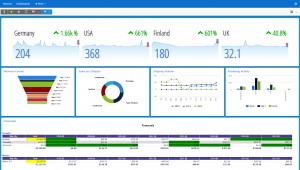 A recent New York Times magazine article mentions a major change in the business world. Not long ago, the most celebrated business books counseled executives to “trust their gut” in making decisions. “No more,” the article states. “The gut is dead. Long live the data, turned out day and night by our myriad computers and smart devices.”
A recent New York Times magazine article mentions a major change in the business world. Not long ago, the most celebrated business books counseled executives to “trust their gut” in making decisions. “No more,” the article states. “The gut is dead. Long live the data, turned out day and night by our myriad computers and smart devices.”
Just a few years back, numerous books — from Dan Ariely’s “Predictably Irrational” to “Freakonomics” to Malcolm Gladwell’s “Blink” claimed the secret to decision-making was not found in linear thinking or scientific method, according to the article, but outside our intellects. “Tedious hours of research, conducted by artless cubicle drones, became the province of companies courting Chapter 11,” the article states.
Today, everything has changed.
While sweeping statements about how executives think may not apply to all, there is no doubt that data plays a much bigger role now in business decisions. Reports from leading research analysts confirm this trend, and have been repeatedly cited in this blog.
Avoiding Fear in Decisions
But what about those executives who still don’t trust their data? What about those who want to “go with their gut?”
There is ample proof that even in a data-driven organization, emotion still plays a big part in decision-making. However, clearly, the best decisions combine the right emotions, such as intuition, with business intelligence. Fear should not be one of the emotions dominating decisions. Fear of what your data may tell you may be a huge strategic mistake.
BI solutions are there not to provide executives with selective data that supports their ongoing strategies or processes. Confident managers and leaders in organizations, free of fear, can learn how to trust their data, not their gut, in decision-making, wherever those decisions lead.
BI for More than Managers
Just as important, BI solutions empower more than executives. BI solutions, including Izenda’s, enable data to be democratized in the organization. End-users can explore data and create reports, dashboards and visualizations wherever and whenever they want, on any device. Gartner has written about the importance of self-service BI, and how the majority of organizations will have self-service BI by 2017.
Those considering BI software solutions for organizations or end-users must also consider the changing workplace. A recently published white paper stressed the importance of embedding BI tools within the application-user’s work. Millennials, who have grown up with technology, and an overall more tech-savvy workforce expect to be able to easily explore data within the applications they are using on the job. And that application should be portable for them to use, whether they are in the office, the office lounge or a local coffee shop.
Business users generally don’t have the luxury of making decisions in their jobs based on their gut. Using a modern ad-hoc reporting and analytics solution, they don’t have to. Nor do their bosses.
Learn how Izenda’s platform delivers modern self-service reports, dashboards, and visualizations to organizations.
Follow Izenda on social media for the latest on technology and business intelligence:

